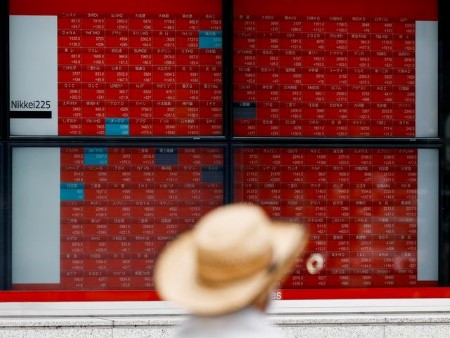




Monthly Economic Update: One for the road
 DOWNLOAD
DOWNLOAD

Inflation Update: Still low, still slow
 DOWNLOAD
DOWNLOAD

Philippines Trade Update: Exports momentum continues
 DOWNLOAD
DOWNLOAD


‘Turnaround Tuesday’ soothes nerves … for now

Investors in Asia will be hoping that the recovery in global sentiment and risk assets on Tuesday extends into Wednesday, although the rebound in US bond yields and the dollar may cool some of that optimism.
Nothing epitomized ‘Turnaround Tuesday’ more than the whoosh in Japanese stocks – a day after tumbling 12% in their second biggest fall on record, stocks rallied 10% for their third biggest rise on record.
In some ways, however, day-to-day swings of that magnitude based on not a lot of fresh or major market-moving news are red flags. They’re typical of more protracted and volatile downturns, and many investors are retaining a cautious stance.
That said, any respite is welcome. Implied yen volatility remains elevated but eased off on Tuesday, and Wall Street and MSCI’s emerging, Asian and world stock indices all gained more than 1%.
Fears of impending US recession will have been allayed further too, as the Atlanta Fed’s GDPNow growth tracker estimate for third-quarter GDP growth was raised to 2.9% from 2.6%.
Little wonder that US bond yields and the dollar rose. That’s a twin dynamic that is rarely positive for emerging markets, but if it is part of a broader market recovery and cooling off in volatility then investors may be more forgiving.
Emerging market participants will also note that the steep fall in US yields in recent weeks has more than offset the decline in stock prices. So much so that emerging market financial conditions are now the loosest since January, according to Goldman Sachs.
Wednesday’s calendar in Asia includes Chinese trade figures for July, the latest FX reserves holdings from China, Japan, and Hong Kong, and earnings reports from Singapore’s top bank DBS and Japan’s SoftBank Group.
China’s trade data will be under even particular scrutiny given the ratcheting up of US trade and tariff tensions. Export growth is seen quickening, a potential silver lining to the world’s second-largest economy still struggling under a property sector bust, weak consumer demand, and the threat of deflation.
Monthly changes in countries’ FX reserves holdings rarely have an immediate impact on financial markets, but anyone with an interest in the dollar’s reserve status will cast an eye toward the latest updates from Beijing, Tokyo, and Hong Kong.
That’s nearly USD 5 trillion of reserves, 40% of the global total. China holds the world’s largest stash, with USD 3.22 trillion, and Japan is the largest overseas holder of US Treasuries, with USD 1.13 trillion.
Several leading policymakers in the Asia and Pacific region are scheduled to speak on Wednesday, including Reserve Bank of Australia assistant governor Sarah Hunter, Bank of Japan deputy governor Uchida Shinichi, and Bank of Thailand governor Sethaput Suthiwartnarueput.
Here are key developments that could provide more direction to Asian markets on Wednesday:
– China trade (July)
– China, Japan, Hong Kong FX reserves (July)
– Softbank earnings (Q1)
(Reporting by Jamie McGeever)
This article originally appeared on reuters.com





 By Reuters
By Reuters